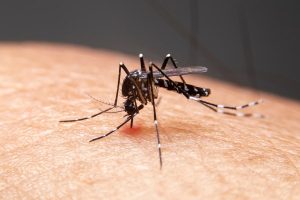The brutal flu season continues to ease its grip on the United States, with the latest government data showing that doctor visits are still dropping and less severe strains of the flu are starting to account for more infections.
But hospitalizations for flu are still rising, as are pediatric deaths.
For the third week in a row, there was a decrease in the number of doctor visits for flu-like illness, the U.S. Centers for Disease Control and Prevention reported Friday.
As of Feb. 24, the CDC said, 5 percent of patient visits to doctors were for the flu, down from 6.4 percent of patient visits the week before.
And, as health officials predicted, cases of less severe influenza B infections are now starting to edge closer in number to the more severe influenza A cases.
For the week ending Feb. 24, influenza B infections accounted for 48.4 percent of cases, while influenza A infections accounted for 51.6 percent. For the entire season so far, influenza A strains have been responsible for nearly 74 percent of all cases, the CDC report noted.
But hospitalizations for the flu remained worrisome.
Flu-linked hospitalization rates continued to rise — from 74.5 per 100,000 people for the week ending Feb. 17, to 81.7 per 100,000 people for the week ending Feb. 24, the CDC data showed.
Pediatric flu deaths are also still increasing, with 114 children now dead from the flu so far this season.
CDC officials have pinpointed one reason why this flu season has been so tough: the flu vaccine is only 25 percent effective against more severe H3N2 influenza, which is causing most flu cases this year.
Among children aged 6 months through 8 years old, however, the vaccine’s effectiveness is 59 percent, the agency reported.
Despite the poor match of the vaccine to the most common strain of flu, the CDC is still urging people who haven’t gotten a flu shot to get one, because the vaccine is more effective against other types of flu.
For instance, the vaccine is 67 percent effective against the H1N1 flu, which was the 2009 pandemic flu and is still around. In addition, the vaccine is 42 percent effective against the influenza B viruses, which are also circulating, the researchers said.
The flu shot’s overall effectiveness against all strains was pegged at 36 percent, the CDC said.
But Dr. Daniel Jernigan, director of the agency’s influenza division, stressed last month that getting the flu shot is still worthwhile, especially for kids.
“For this season, only 20 percent [of children who died from the flu] have been vaccinated, and half of these children were otherwise healthy,” he said. The deaths were associated with H3N2, H1N1 and influenza B strains — “all of the different types of influenza are causing these deaths,” Jernigan noted.
Other countries also have or are experiencing a bad flu season because of the vaccine’s ineffectiveness against the H3N2 virus. In Australia, for example, its effectiveness against H3N2 was pegged at 10 percent, and in Canada it has been between 10 to 20 percent.
The CDC recommends that everyone aged 6 months and older get a flu shot.
Some people who get vaccinated will still get sick with flu, but may have milder cases. The CDC advises that people who are very sick or who are at high risk for serious flu complications should get antiviral medications as soon as flu symptoms appear.
The CDC’s FluView update was published online March 2.
More information
The U.S. Centers for Disease Control and Prevention has more about the flu.
Source: HealthDay
Copyright © 2025 HealthDay. All rights reserved.

















